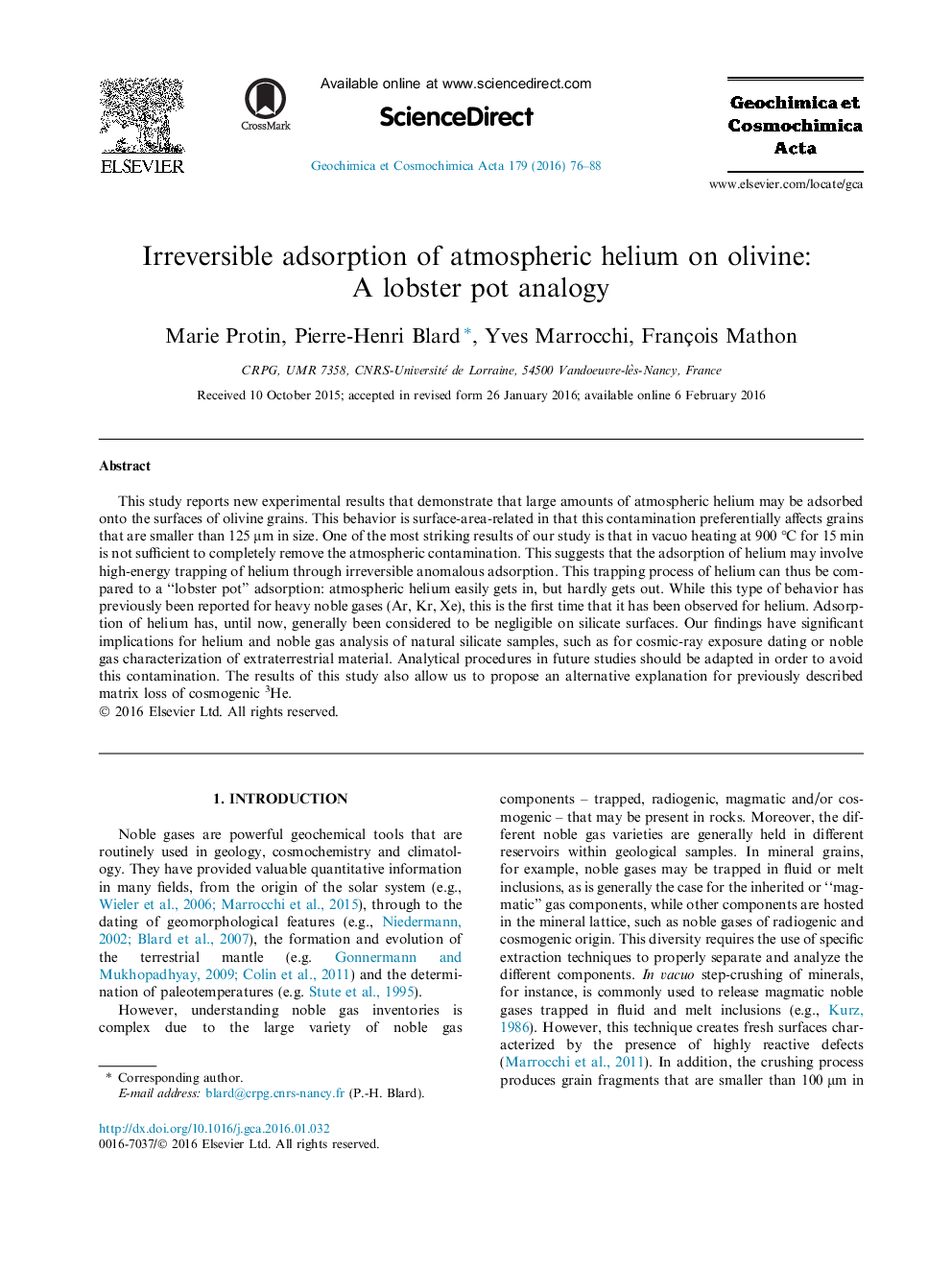| Article ID | Journal | Published Year | Pages | File Type |
|---|---|---|---|---|
| 6437584 | Geochimica et Cosmochimica Acta | 2016 | 13 Pages |
â¢Finely crushed (<125 μm) olivines have significantly lower 3He/4He ratios than coarse fractions (>200 μm).â¢These low ratios are interpreted as “surface-controlled” atmospheric contamination.â¢In vacuo heating at 900 °C is not sufficient to completely remove the adsorbed component.â¢This anomalous adsorption involves irreversible high-energy subsurface trapping ('lobster-pot' trapping).â¢Fine fractions (<125 μm) should be avoided to avoid contaminating the noble gas inventory of silicates.
This study reports new experimental results that demonstrate that large amounts of atmospheric helium may be adsorbed onto the surfaces of olivine grains. This behavior is surface-area-related in that this contamination preferentially affects grains that are smaller than 125 μm in size. One of the most striking results of our study is that in vacuo heating at 900 °C for 15 min is not sufficient to completely remove the atmospheric contamination. This suggests that the adsorption of helium may involve high-energy trapping of helium through irreversible anomalous adsorption. This trapping process of helium can thus be compared to a “lobster pot” adsorption: atmospheric helium easily gets in, but hardly gets out. While this type of behavior has previously been reported for heavy noble gases (Ar, Kr, Xe), this is the first time that it has been observed for helium. Adsorption of helium has, until now, generally been considered to be negligible on silicate surfaces. Our findings have significant implications for helium and noble gas analysis of natural silicate samples, such as for cosmic-ray exposure dating or noble gas characterization of extraterrestrial material. Analytical procedures in future studies should be adapted in order to avoid this contamination. The results of this study also allow us to propose an alternative explanation for previously described matrix loss of cosmogenic 3He.
